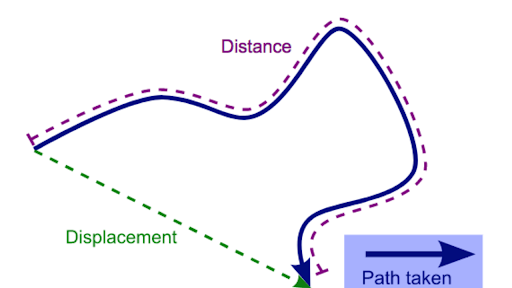Determine the Total Distance Required to Land.
If an emergency situation requires a. Refer to Figure 38 Determine the total distance required to land over a 50-foot obstacle.

Here Are The Changes To The Faa S 25 Year Old Traffic Pattern Procedures Via Boldmethod 25 Years Old Flight Training 25 Years
Read the total distance required to clear a 50-foot obstacle 1195 feet.

. Refer to figure 38 Determine the total distance required to land. Apply Note 1 to account for an 8-knot headwind a 20 decrease in distance. The temperature is standard requiring no adjustment.
Refer to figure 38 Determine the total distance required to land over a 50-foot obstaclePressure altitude7500 ftHeadwind8 ktsTemperature32 FRunwayHard surface a 1506 feet. PLT008 PVT Refer to figure 38 Determine the approximate total distance required to land over a 50-foot obstacle. Figure 38 2021 Sportys Pilot Shop.
Pressure altitude 5000 ft Headwind 8 kts Temperature 41F Runway Hard surface A 837 feet. 1195 x 20 239 feet 1195 - 239 956 feet 956 feet. Determine the total distance required to land.
To correct for pressure altitude we do the same thing at 6000 feet. OAT 32F Pressure altitude 8000 ft Weight 2600 lb Headwind component 20 kts Obstacle 50 ft A. The difference between landing distance at sea level and 2500 ft.
Determine the total distance required to land over a 50-foot obstacle. Answer B is correct FAA-H-8083-25B Chap 11 The landing ground roll at a pressure altitude of 1250 ft. 114 125 1425 miles.
Refer to figure 37Determine the total distance required to land. Determine the total distance required to land. Pressure altitude 5000 ft Headwind 8 kts Temperature 41F Runway Hard surface A 837 feet.
5000 feet left left1315 - 1215right over 2 right 1215 1265 ground roll at 5000 left left2525 - 2320right over 2 right 2320 2422 50 ft obstacle at 5000. OAT 90F Pressure altitude 6000 ft Weight 2800 lb Headwind component 10 kts Associated conditions. H920 Refer to figure 38 Determine the approximate total distance required to land over a 50-foot obstacle.
Ago PPL CMP HP IR CPL-ST SEL KLOM if you had several hours to spend you could transcribe the POH takeoff charts into excel or google. OAT 90F Pressure altitude 3000 ft. 1195 x 20 239 feet 1195 - 239.
To calculate the ground roll at 25 celsius we can interpolate between 20 and 30 degrees. 2900 lb Headwind component. One-half of this distance 12 plus the 445 ft.
Some experienced pilots recommend using the obstacle clearance distance as their anticipated ground roll. No there are a massive number of environmental and engineering variables that go into making those graphs and getting those numbers. Determine the total distance required to land over a 50-foot obstacle.
What is one purpose of wing flaps. CORRECT ANSWER IS IN BOLD ITALICS 3692. At sea level is 457 ft.
Distance equals speed times time. Refer to FAA -CT 8080 2H Figure 38 Determine the total distance required to land over a 50foot obstacle. 8000 ft Weight.
OAT 90F Pressure altitude 3000 ft Weight 2900 lb Headwind component 10 kts Obstacle 50 ft A. Term Refer to figure 39 Determine the total distance required to land over a 50-foot obstacle. So distance equals 114 knots times 75 minutes or 125 hours.
OAT Std Pressure altitude 10000 ft Weight 2400 lb Wind component Calm Obstacle 50 ft. Pressure altitude 5000 ft. Determine the total distance required to land over a 50-foot obstacle.
Determine the pressure altitude at an airport that is 1386 feet MSL with an altimeter setting of 2997. Using that method the calculated takeoff run of 962 feet should really be 1924 feetand thats about 84 feet beyond the end of the runway. Others simply double the book numbers.
Headwind 8 kts. Headwind component 10 kts. Runway Hard surface.
Enter FAA Figure 37 at the point where the vertical 32F temperature line intersects the 8000-foot pressure altitude line. A lot of it is data the manufacturers dont ever release. Have a great holiday and dont study too hard.
Refer to Figure 37 Determine the total distance required to land. 0F Pressure altitude. B 1451 feet MSL.
Determine the total distance required to land. It depends on whether you are a Part 91 a Part 135 operator or a Part 135 eligible on-demand operator For Part 135 operators landing distance is. 10 kts Obstacle.
Determine the total distance required to land. C 1562 feet MSL. Weight pounds Speed at 50 ft kts MPH Power Retarded to maintain 900ft on final approach Flaps Down Landing gear Down Runway Paved level dry.
Whats the safest way to calculate runway landing distance while reflecting real-world pilot and airplane performance. Refer to FAA -CT 8080 2G Figure 38 Determine the total distance required to land over a 50foot obstacle. 3000 ft Weight.
OAT 90 F Pressure altitude 4000 ft Weight 2800 lb Headwind. Determine the approximate total distance required to land over a 50-ft. Refer to figure 37 on page 194 Determine the total distance required to land OAT 32ºF Pressure altitude 8000 feet weight 2600 lbs headwind component 20 kts obstacle 50 feet 1400 feet.
32F Pressure altitude. OAT90 F Pressure altitude3000 ft Weight2900 lbs Headwind component10 kts Obstacle50 ft. Use the following steps.
Refer to Figure 37 Determine the total distance required to land. A 1341 feet MSL. Alternatively use math to find the answer.

Distance And Displacement Review Article Khan Academy

Probability Worksheets 7th Grade Math Probability Worksheets Probability Math Simple Probability

Earth Science Bell Ringers Warm Ups Or Exit Ticket Full Year Bundle Earth Science Middle School Science Teacher Secondary Science Classroom
No comments for "Determine the Total Distance Required to Land."
Post a Comment